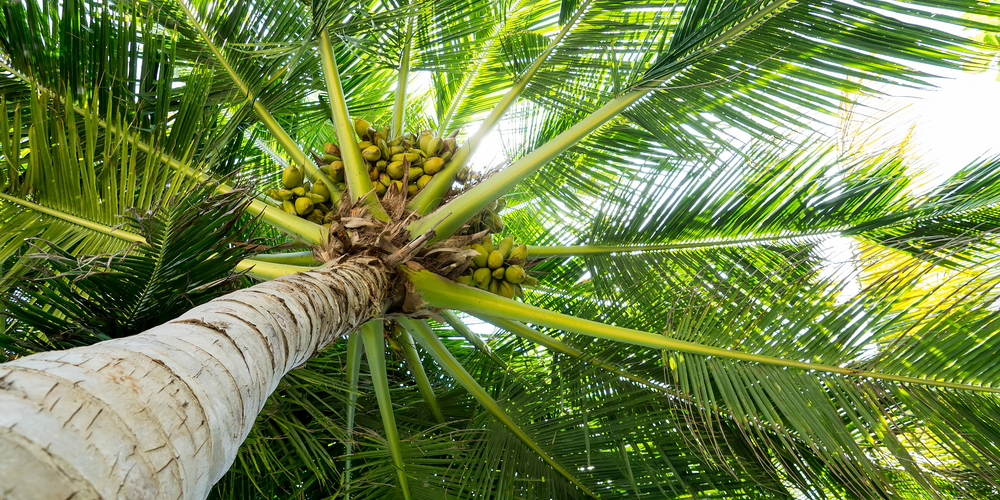Because the coconut tree is a tropical plant, only a few locales in the US that will support it. Florida and Hawaii are great spots for these trees, but it is possible to grow them in Texas. Here’s what you need to know about growing a coconut tree in Texas.
Know Your Zone
The USDA’s plant hardiness zone map is a valuable tool for any gardener, as it can show you the average temperatures for where you live. You can rule out some plants when planning your garden based on their inability to survive or thrive in your particular zone.
Since the coconut tree is a tropical plant, it needs to live in a hardiness zone that doesn’t fall below freezing. That means zones 10, 11, and 12 are the only ones conducive to coconut trees.
According to the hardiness zone map, only small parts of extreme south Texas fall into zone 10, and the further north you move, the lower the zone number. Texas is so large that, north of Amarillo, it contains five different hardiness zones.
Unless you plan to move your coconut tree indoors— and that’s possible— you won’t be able to grow it successfully in Texas unless you live near the southern border in zone 10.
Climate Change Has a Say in It
As the world continues its warming trend, the hardiness zones are shifting, meaning that some areas in Texas farther from the border will begin to support coconut trees if they don’t already.
The tropics are expanding, so more and more areas that couldn’t support warm-weather crops are beginning to be able to do so. The expansion rate currently holds at about 30 miles, or half a degree, per decade.
Other Options
If you live in Dallas, among other spots north of Brownsville, you currently have only one choice for ensuring your coconut tree thrives year-round: plant in a container, then be prepared to move a tree indoors once nighttime temperatures begin dropping into the 50s.
Doing so, though, will only succeed if you can keep the tree in a spot indoors where it can still get sunlight. Other than water, that’s a tree’s only real need once it’s safe from frost or other cold damage.
Acclimation
A coconut tree in Hawaii grows accustomed to temperatures that rarely if ever fall below 70°F (21°C). If temps were to plunge into the 40s one night, the tree would likely suffer some tissue damage.
However, if your coconut tree in Texas has had some exposure to cooler temperatures, one chilly night probably won’t hurt it as badly. While your coconut tree will not thrive if it spends a lot of time in cool weather, once it’s grown used to less-than-tropical conditions, it will withstand cooler temps in small doses.
You Still Have To Move It
Unless you live in that zone 10, though, no amount of acclimation will save your tree once the thermometer drops into the 30s. Even Houston, with its famously oppressive heat and humidity, spends almost 500 hours per year experiencing temperatures below 45°F and does endure several nights of frost annually.
These happen almost exclusively during late December and early January, but even one of these frost events will kill your coconut tree.
Final Thoughts
If you are bound and determined to grow a coconut tree in Texas, it can be done. Your best bet will be to try it at the southern border, where you can plant a tree firmly in zone 10. If you live in zones north of that, you’ll need to bring your coconut tree indoors once soil and air temperatures drop below tropical norms.


